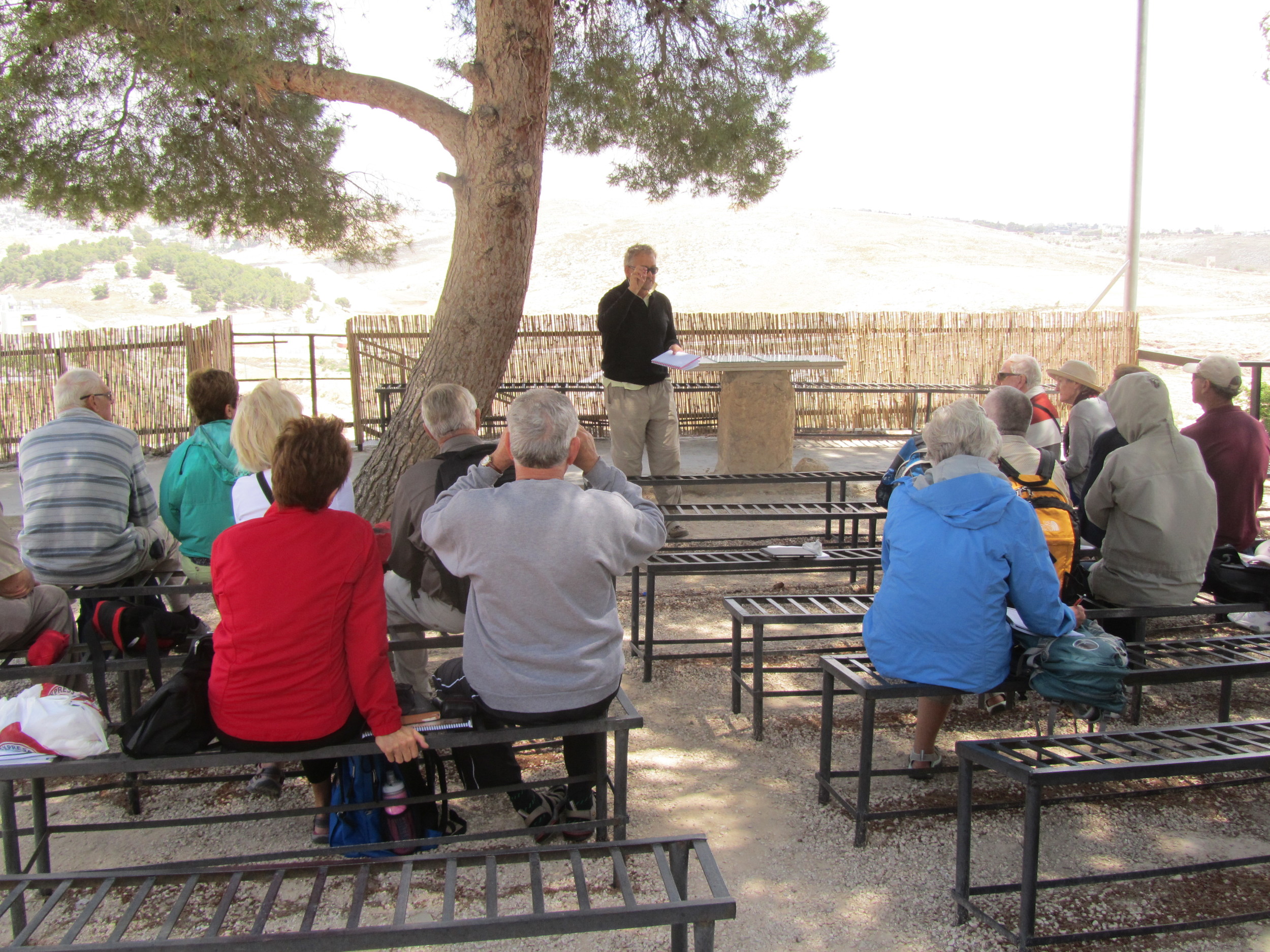Today we began the journey of actually following Jesus' footsteps by visiting the place of his birth in Bethlehem and the angelic announcement to nearby shepherds. Although we don't have any archaeological evidence to locate the site of Jesus' birth, as early as the third century early Christian pilgrims reference a cave in Bethlehem where he was born. Today the fifth century Church of the Nativity built by Emperor Justinian to replace the Constantinian church that was destroyed in the Samaritan Revolt, stands over that cave.
Interior of the Church of St Catherine at Manger Square in Bethlehem
Unfortunately the ancient Church of the Nativity is undergoing major roof renovations so we couldn't see much inside. I wasn't too disappointed because I prefer the aesthetics of the next door Church of St. Catherine, even if it doesn't boast the same historical pedigree. The two side by side churches can be a contrast in religiosity vs. living faith.
Our Group Pauses in Bethlehem for Reflection and Prayer
After visiting the churches we took some time to read Luke's account of Jesus' birth and reflect on the astounding fact that God became real to us by emptying himself and taking on the form of a servant. When you see the place and ponder the circumstances of Jesus' birth it is a powerful reminder that God chooses to work through the humble and submitted, not those who enjoy earthly glory or exercise temporal power. I guess that means if I want God to work through my life I am called to be more humble and submitted to him!
Malcolm Potts Brings a Word on Psalm 23 at the Shepherd's Fields
We wound our way out of Bethlehem on a maze of criss-crossed streets heading for the Christian Palestinian village of Bet Sahour, the traditional location of the Shepherd's Fields. As we worshiped in the midst of the ruins of a Byzantine monastery, we glorified God and pondered the connection between the shepherd boy David, his 23rd Psalm, and the shepherds who first heard the good news of Jesus' birth. It was a beautiful moment when Malcolm paused in his teaching to point out the shepherd boy with his flock of sheep on the hill in front of us!
The Newly Discovered Theater at Herodium
Our next stop we explored another of Herod the Great's desert fortress-palaces called Herodium. Herod hollowed out a mountain, smoothed off the sides, and built a circular fortress with huge towers and defensive walls. Down below he built an expansive luxury complex surrounding an impossibly huge swimming pool! Most recently archaeologists discovered that Herod chose Herodium as his final resting place, uncovering a huge sarcophagus, a towering mausoleum, and a buried theater. It is fascinating to see archaeology bringing history to light before our very eyes ...
Reflecting on True Authority and Power in the Herodium Synagogue
As we sat in Herod's banquet hall which the Zealots converted into a synagogue we read the account of Herod's slaughter of the innocents in nearby Bethlehem. We couldn't help but contrast Herod's understanding of authority and exercise of power with Jesus of Nazareth. In the end all Herod's glory crumbled and disappeared under dirt and rubble, whereas the movement Jesus started has grown and multiplied for twenty centuries!
Herod's Lower Palace at Herodium






